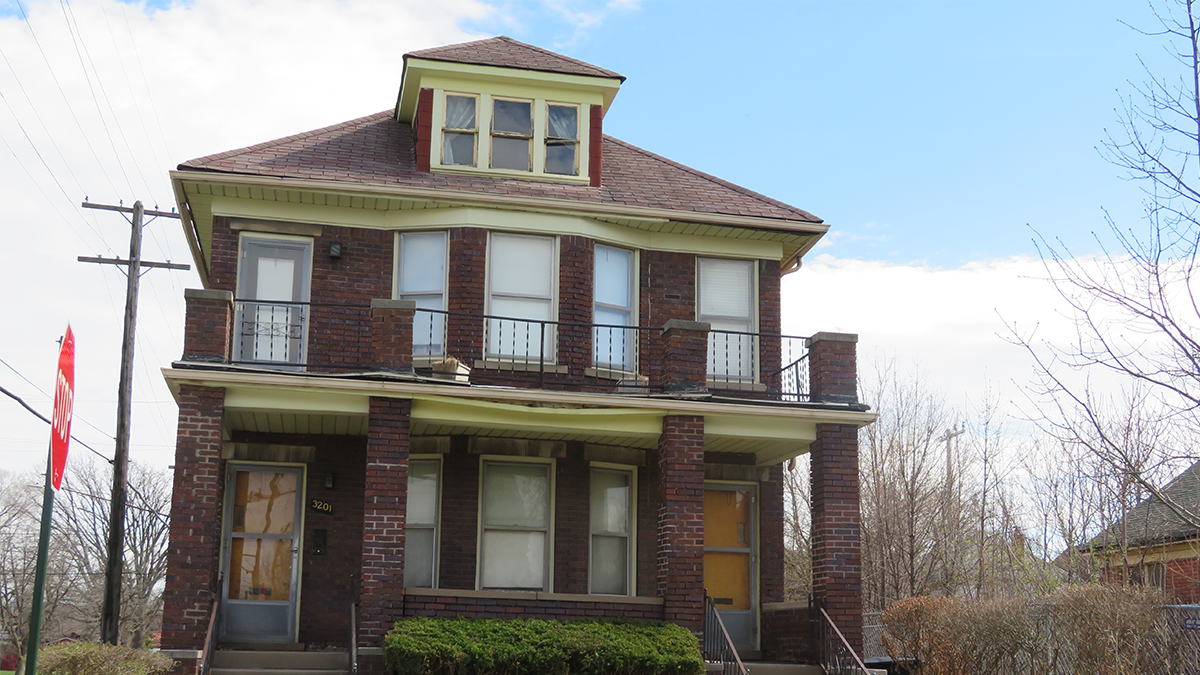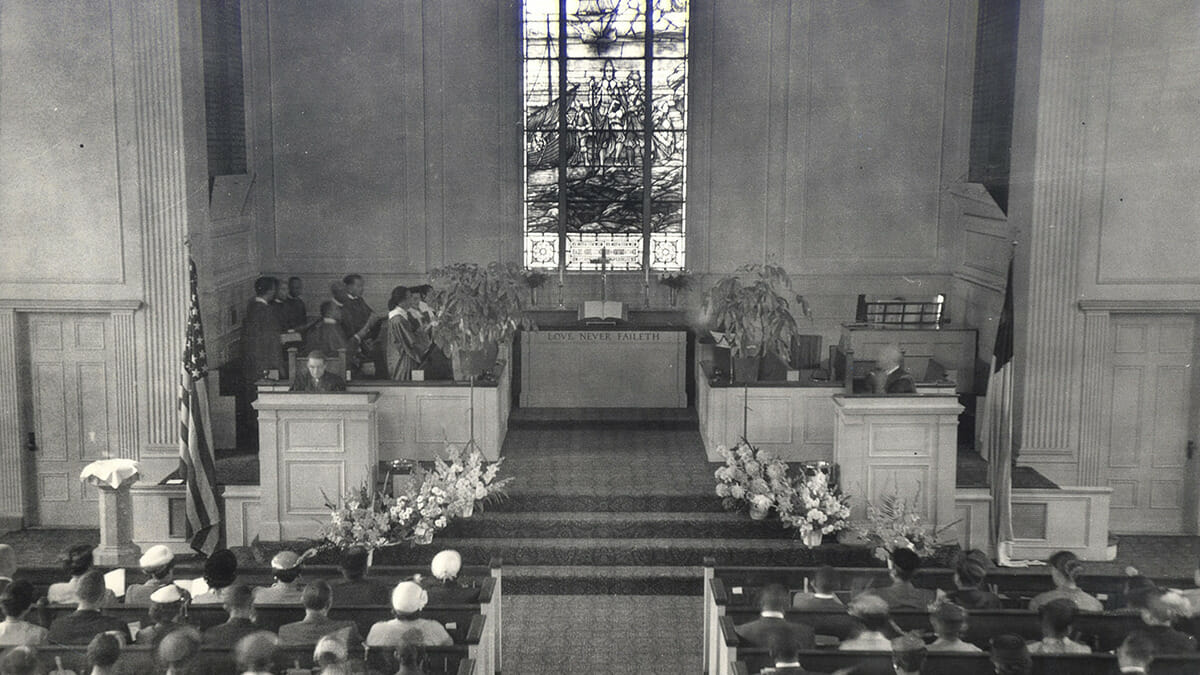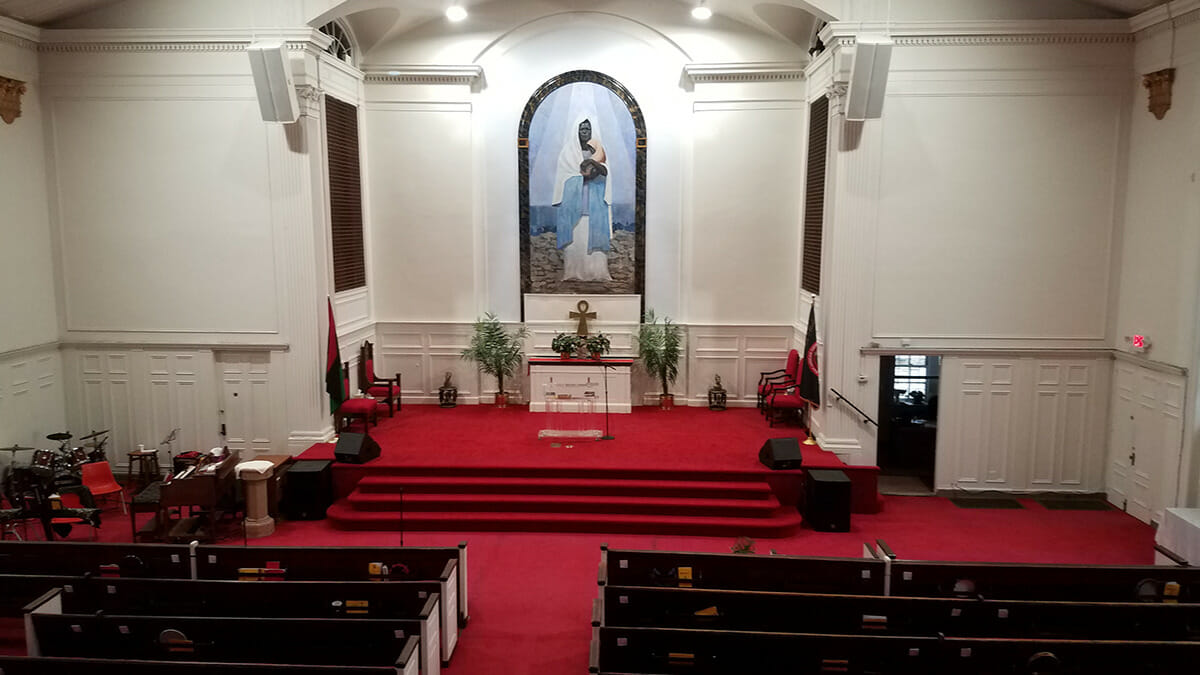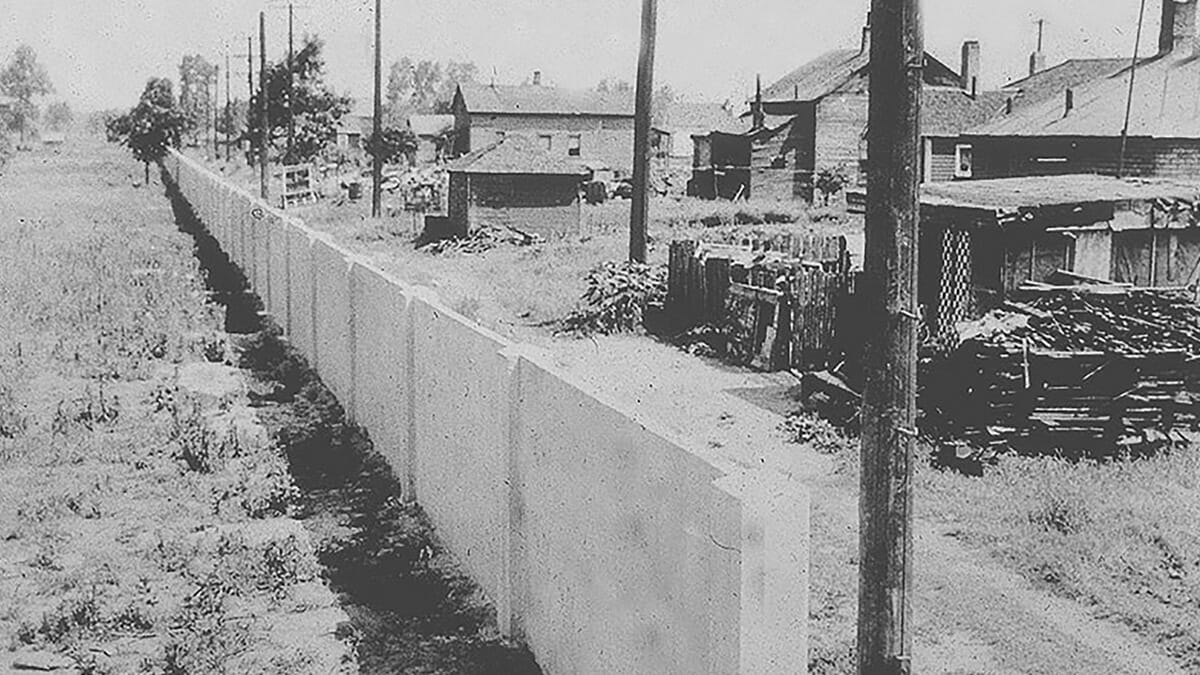Celebrating Forgotten Histories
in Detroit Through Historic Preservation

Exterior, sidewalk view of the Rosa and Raymond Parks flat in Detroit, MI
By Ruth Mills, Saundra Little, and Lorynn Holloway
Rosa Parks is best known for her refusal to give up her bus seat to a White man in Montgomery, Alabama, in 1955, launching the Montgomery Bus Boycott. That moment forever fixed Ms. Parks as the “mother of the civil rights movement” and as a powerful symbol of resistance, strength, and freedom. Yet this symbolism has often overshadowed her subsequent civil rights work and few people know that the modest ground-story flat where Ms. Parks was living while she accomplished some of her most significant civil rights activism still exists on Detroit’s west side.
This is just one example of how Detroit’s often overlooked but rich history of civil rights activism has influenced the struggle for Black equality in Michigan and the United States. Quinn Evans and Centric Design Studio, a Black-led, woman-owned firm that is now part of Quinn Evans, led a collaborative project to develop a historic context and evaluate over 100 sites dating from the early 1900s to the mid-1970s for eligibility for the National Register of Historic Places (NRHP), representing the unique fabric of the city’s 20th century civil rights legacy. Viewing these sites through the lens of common spaces may seem unconventional, but they directly represent the experiences of the Black community in Detroit in the struggle to overcome racial discrimination.
For many years, Black historic sites were marginalized in NRHP nominations. Two programs of the National Park Service (NPS), the Underrepresented Community Grants and the African American Civil Rights Grants, provide funding to identify, document, rehabilitate, and interpret civil rights sites and expand the NRHP’s diversity. Since 2016, Michigan has received more than $3.8 million in federal grant funding to document Black civil rights history.
Many significant sites associated with Black civil rights events, organizations, and leaders have been lost through urban renewal in the 1950s and 1960s, the destruction consequent to the 1967 Detroit Rebellion, or neglect and demolition resulting from the city’s need to address a decreasing population. “A lot of the loss was due to racism and ignorance – the focus on preserving the city’s White history, or past city leaders not knowing or caring about Black history and sites,” says Ruth Mills, M.A., M.S. and Quinn Evans project manager. This directly impacted Detroit’s Black neighborhoods, nearly eliminating these once thriving common spaces. As the resource pool diminished, the cultural legacy of the remaining historic sites rose in importance.

The church congregation gathers for service at the Shrine of the Black Madonna, circa 1960s

Present day photo of the revitalized sanctuary in the Shrine of the Black Madonna
“By listing these sites, the National Register recognizes Detroit’s significant role in the the wide range of issues the Black community encountered as it worked toward empowerment during this period.” said Martha MacFarlane-Faes, Michigan State Historic Preservation Officer
The Quinn Evans team’s historic preservation expertise and deep roots within the City of Detroit added a necessary layer to the delicate nature of the effort. Community involvement was paramount and included an Advisory Board composed of local Black and civil rights historians as well as robust public engagement to keep the community informed of the project’s goals, processes, and outcomes. Advisors identified important themes, people, and places to guide research and the survey, a critical component as documenting Black historic sites is particularly challenging due to missing and biased information in official documents and mainstream sources. The Quinn Evans team collaborated with the Advisory Board on the selection of 30 sites for an intensive level survey and five sites to be formally nominated to the NRHP as part of the project. A GIS-based bike tour highlights over 20 civil rights sites related to the theme of resistance.
The project culminated with the listing of five sites in the NRHP:
The Birwood Wall, built in 1941, is a physical embodiment of de jure and de facto segregation in the U.S. The wall separated an established Black neighborhood from a proposed White development under the policies of the Federal Housing Authority that would not back mortgages for racially diverse neighborhoods. Over time, Black residents broke the racial barriers symbolized by the wall. It has become a common space for the community, with the section of the wall adjoining Alfonso Wells Memorial Park painted to represent the community’s history. A Michigan Historical Marker, installed in October 2022, emphasizes the wall’s transformation from a discriminatory symbol into an emblem of tenacity and perseverance.
Detroit’s Black churches are more than houses of worship. They are common spaces for congregations and communities, and are centers for Black spiritual, social, and political life. Black religious leaders were pivotal in the civil rights movement. New Bethel Baptist Church was led by the Reverend C. L. Franklin, a close friend of Martin Luther King, Jr. and a national leader in the movement. It was also the home church of Franklin’s daughter, Aretha, who used her music career to further the cause of civil rights. Reverend Albert B. Cleage, Jr. founded the Shrine of the Black Madonna of the Pan African Orthodox Church and became a leading figure in the Black Nationalist and Black Christian Nationalist movements. Together Franklin and Cleage organized the 1963 Walk to Freedom which presaged the March on Washington later that summer and where Martin Luther King, Jr. gave an early version of his “I Have a Dream” speech. Both churches remain in operation today and continue to serve as centers for spiritual and community engagement.
WGPR TV was the first Black-owned and operated television station in the United States, debuting in 1975 and airing original programming including a Black-focused newscast, dance show, and public affairs shows. It afforded career and training opportunities for Black people both in front of and behind the camera, and provided a virtual common space for Black residents of Detroit and beyond where they could see their interests and issues addressed in a respectful and nuanced manner. The studio is now a museum dedicated to telling the story of WGPR TV.

A section of the Birwood Wall showing the separation of the Black neighborhood on the right from the proposed White development on the left.

The reimagined Birkwood Wall adjoining Alfonso Wells Memorial Park, painted to symbolize the Black community’s history and endurance.
The Rosa and Raymond Parks Flat in the Virginia Park neighborhood was Ms. Parks’ Detroit home for over 25 years from 1961 to 1988. From her first floor flat, Ms. Parks organized and supported the civil rights movement, from her work in the office of Congressman John Conyers, to her leadership in local organizations and continued participation at national events. She welcomed young civil rights activists to her home where they discussed issues and debated tactics, nurturing the growing Black Consciousness movement. Although it is not currently open to the public, the flat today is preserved largely as the Parks family knew it. Recognition of its historic importance upholds the legacy of Ms. Parks’ work to combat racial inequality.
There is still a great deal of work ahead to document and preserve the over 100 identified historic sites throughout Detroit. As designers, we embrace opportunities where our work intersects with the public realm but recognize that engaging with sites of the past that may hold complex or painful associations for members of Detroit’s Black community requires empathy. While many sites have been lost, others have been significantly altered in response to community needs. This is a challenge in nominating sites for the NRHP, where physical integrity is a key requirement, but the legacy of economic disinvestment is part of the overall story of Detroit’s civil rights history.
The honorary NRHP designation raises awareness but does not provide protection for historic sites. However, it does open the door for preservation tax incentives and grant programs. “This project effort was ahead of the need for doing the necessary work to include these sites in the NRHP,” says Saundra Little, FAIA, LEED AP, NOMA, and Quinn Evans principal and Director of Diversity & Inclusion. “We ran into some issues during the survey process because any historic sites that were already demolished could not be considered for registration.”
The project finished at the onset of the COVID-19 pandemic, postponing a full celebration of its successes, but the effort has already saved at least one building, a modest storefront on Dexter Avenue that housed Vaughn’s Bookstore, the first Black-owned bookstore in Detroit and a hub of Black journalism and activism. The Michigan SHPO continues to fund projects to increase the diversity of NRHP nominations and connect individuals, non-profits, and local groups with preservation funding. The resources offered through federal grant and incentive programs hold the promise of a deeper level of physical storytelling and engagement informed by an appreciation of culture and heritage. The 20th Century African American Civil Rights Sites project will give the common spaces of Detroit’s civil rights history the level of recognition they deserve, bring greater opportunities for their preservation, and help inspire future generations.
